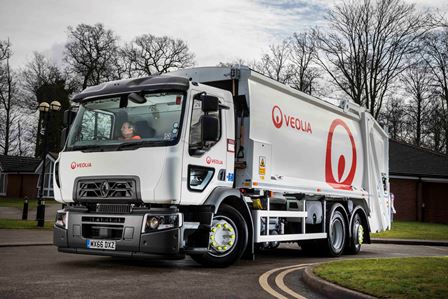How we manage waste
Over recent years, the University has invested significantly in the provision of recycling facilities across the campus, both internally and externally and now manages over 60 waste streams, most of which are recycled or re-used.
Many recyclates are collected on a daily basis by the Campus Cleansing Unit as illustrated in the various videos here, or by the University's waste contractors, Veolia (ES) UK Ltd. The waste management sites used by Veolia are detailed in the waste register in the "useful documents" box, bottom right.
A local company, Elsa Recycling, collect the majority of the University's waste office paper and cardboard.
The general (residual) waste that is left over is collected and disposed of by Veolia via a contract which started on 7th January 2019.
The waste is taken to Veolia’s Materials Recovery Facility in Trafford Park. Here a limited amount of recyclates are removed before the remaining waste is shredded and bulked up before being transferred to a site in Ferrybridge, West Yorkshire, where it is processed as a Refuse Derived Fuel (RDF).
The Ferrybridge Facility,known as FM1, is operated by Enfinium and is a R1* rated facility meaning that the process for treating waste is deemed a “recovery” rather than a “disposal” operation in line with the Waste Hierarchy.
The major components of the FM1 include a waste receiving and storage area integrating a 57,600m3 enclosed solid fuel bunker, combustion and boiler facilities, flue gas treatment facilities and residue handling and treatment facilities.
The plant has two 117MW, 5 pass boiler lines which commenced burning fuel in 2015.
The waste/fuel is burned under controlled conditions to produce steam using the 2 boilers and the steam is fed to an extraction-condensation turbine to generate electricity. The plant burns an average of 75 tonnes of waste per hour to produce 73MWh net export of electricity - so almost 1 MWh per tonne of waste. Excess heat is recovered on site and returned to the process which makes the plant more efficient.
Flue gas derived from the plant is treated using the DeNOx** technology through the selective non-catalytic reduction (SNCR) method (and released into the atmosphere through an 100m stack.
Approximately 20% of the fuel burn by weight becomes Incinerator Bottom Ash (IBA) - this is taken to a purpose-built facility adjacent to the plant operated by Blue Pheonix. Here, 100% of the material is reprocessed into incinerator bottom ash aggregate (IBAA), which is used to make construction products such as breeze blocks. A small quantity of ferrous metal is also recovered from the IBA and is sent for recycling.
A further 4% of the fuel burn by weight becomes an air pollution control residue (APCr) - this is fly ash contaminated with hydrated lime and activated carbon. This material is currently taken to two sites - Castle Environmental in Ilkeston, Nottinghamshire and OCO Technology (formerly Carbon8) in Leeds. Almost 80% of the APCr is recycled for re-use with the remainder sent for disposal in a hazardous waste landfill, with the long term goal of recycling 100% of the residue so there is zero hazardous waste sent to landfill.
A new energy from waste plant, known as FM2, has now been built on land adjacent to FM1 became fully operational in December 2019. This is a joint venture between Wheelabrator Technologies Inc. and SSE and has cost over £300million to build. FM2 is almost identical in layout and size to FM1 and together the two plants can process up to 1.4 million tonnes of waste and generate enough electricity to power 320,000 homes.
For for an animated video of the above process see here.
* The R1 formula is set out in the EU Waste Framework Directive and is a performance indicator for the level of energy recovered from waste. It is based on factors including the energy produced by a plant and the energy contained in the waste. Where the value of R1 is calculated as being greater than 0.65 the process can be classed as a “recovery” rather than a “disposal” operation, placing it higher up the Waste Hierarchy. It is designed to incentivise municipal solid waste incinerators to improve their energy recovery performance.
** DeNox (NOx) Control Selective Non-Catalytic Reduction (SNCR) is a post-combustion technology that is designed to control nitrogen oxides (NOx) emissions from boilers by the injection of ammonia or urea reagents into the flue gas.



.jpg)